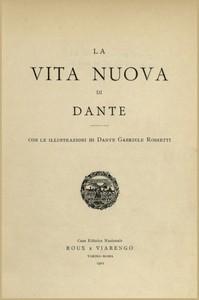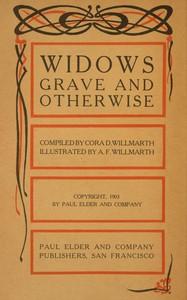Read this ebook for free! No credit card needed, absolutely nothing to pay.
Words: 11415 in 4 pages
This is an ebook sharing website. You can read the uploaded ebooks for free here. No credit cards needed, nothing to pay. If you want to own a digital copy of the ebook, or want to read offline with your favorite ebook-reader, then you can choose to buy and download the ebook.


: Some possible bearings of genetics on pathology by Morgan Thomas Hunt - Heredity; Diseases Causes and theories of causation; Pathology; Genetics
SOME POSSIBLE BEARINGS OF GENETICS ON PATHOLOGY
THOMAS HUNT MORGAN Professor of Experimental Zoology, Columbia University, New York.
Middleton Goldsmith Lecture delivered before the New York Pathological Society on February 3, 1922.
PRESS OF THE NEW ERA PRINTING COMPANY LANCASTER, PA. 1922
SOME POSSIBLE BEARINGS OF GENETICS ON PATHOLOGY
THOMAS HUNT MORGAN, PROFESSOR EXPERIMENTAL ZOOLOGY, COLUMBIA UNIVERSITY.
It has been pointed out in derision that modern genetics deals, for the most part, with the inheritance of abnormalities and disorders of various kinds--albinos, brachydactyls, cretins, dwarfs, freaks, giants, hermaphrodites, imbeciles, Jukes, Kallikaks, lunatics, morons, polydactyls, runts, simpletons, twins, and Zeros: in a word, with pathological phenomena in a very broad sense. This statement, intended as a reflection on genetics, carries with it an implication that a study dealing with such material cannot be of first rate importance. Such condemnation will probably be received by pathologists with the kind of smile it deserves, and I feel that I am not likely to be called upon here to answer such an indictment. Nevertheless, I am going to ask your indulgence, for a moment, since this slightly malicious statement should not be allowed to pass unchallenged, both because it is inaccurate, and because, even were it true, the result of such work might still be of more importance than its critics seem to realize. The source of this criticism is not without significance. It comes almost always from those whose interests lie in the field of evolution--in the old-fashioned use of that word. Now the articles of all evolutionary platforms include a plank about heredity. This plank is for the most part an ancient article that has been worn pretty thin. It is difficult to replace it with the new wood of Mendelian genetics. Hence, I think, originates the criticism referred to.
It is true that the student of Mendelian heredity does not often trouble himself about the nature of the character that he studies. He is concerned rather with its mode of inheritance. But the geneticist knows that opposed to each defect-producing element in the germ-plasm there is a normal partner of that element which we call its allelomorph. We can not study the inheritance of one member of such a pair of genes without at the same time studying the other. Hence whatever we learn about those hereditary elements that stand for defects, we learn just as much about the behavior of the normal partners of those elements. In a word, heredity is not confined to a study of the shuffling of those genes that produce abnormal forms, but is equally concerned with what is going on when normal genes are redistributed. This method of pitting one gene against the other furnishes the only kind of information relating to heredity about which we have precise knowledge.
In man and in domesticated animals we find that individuals appear occasionally that are defective in one or another respect. Some of the defects are inherited. Rarely a new one appears that has not been seen before. But the majority of them are reappearances of characters that have been carried under the surface as recessive genes in the germ-plasm. Today we recognize that each of these modifications, if recessive, has first arisen as a mutational change in a single gene before it appeared on the surface as a character by the coming together of two such genes. Mendelism has furnished some information as to the way in which these hidden genes may get dispersed in the race. An example will serve to make this clear, Fig. 1.
If a fly with vestigial wings, a recessive character, is crossed to a wild fly with long wings, all the offspring will have long wings. If these are bred to each other the offspring will be of two kinds, like their grandparents, in the ratio of three long winged to one vestigial fly. The extracted vestigials will breed true to vestigial. The fact that the gene for vestigial has been carried by long winged F? parents has not affected the gene in any way, for the second generation of vestigials has wings as short as those of their grandparents.
I have brought forward this case not so much to illustrate Mendel's law of segregation as to use the facts for another purpose.
When the vestigial fly was crossed to normal the mutant character disappeared in the hybrid. If such a hybrid is out-bred to normal all the offspring are again normal, but half of them carry the vestigial gene. If these are out-crossed again still only normal flies appear, Fig. 2. If such out-breeding is continued the vestigial gene will become widely distributed without ever showing itself at the surface, so to speak. If, however, at any time two hybrid flies mate, then a quarter of the offspring will have vestigial wings. It might seem then that the character had appeared for the first time in the race, if one did not know its past. In reality its gene may have been there for some time. Probably many of the recessive defects and malformations that appear in the human race--at least those due to hereditary factors--have had representative genes in the germ-plasm for several generations before they have appeared on the surface.
Free books android app tbrJar TBR JAR Read Free books online gutenberg
More posts by @FreeBooks

: La vita nuova by Dante Alighieri Agresti A Antonio Editor Rossetti Dante Gabriel Illustrator - Italian literature






